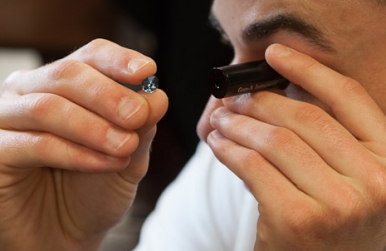The dichroscope consists of two polarizing filters one next to the other. Their polarising networks are arranged perpendicular to each other.
It makes it possible to assess the pleochroism of anisotropic gems, i.e. separate the 2 to 3 colours that can be found in anisotropic gems in order to view them.
Example: a ruby (red) has classic red/orange dichroism (two colours).




